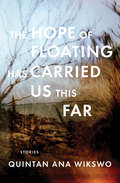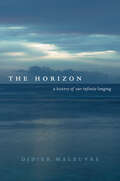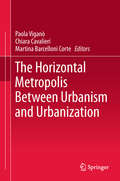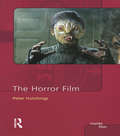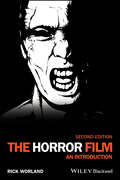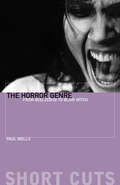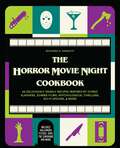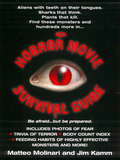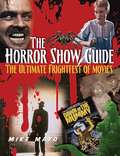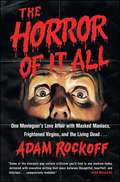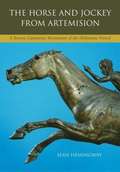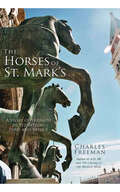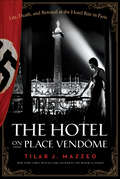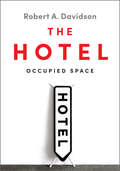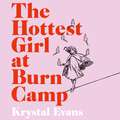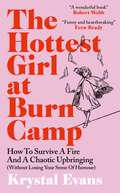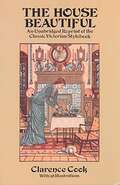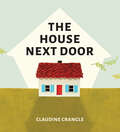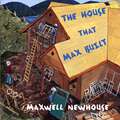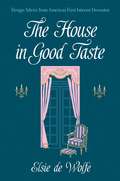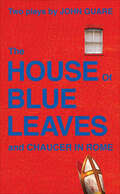- Table View
- List View
The Hope of Floating Has Carried Us This Far: Stories
by Quintan Ana WikswoWhen love, lust, and longing, have all but killed you, and Newtonian physics has become too painfully restrictive, is it possible to find freedom in another dimension? Have you lost the will to live, or the will to live as human? Castaways in unmapped terrain, the characters in The Hope of Floating Has Carried Us This Far burrow underground in tunnels made by ancient nautiluses. They lay eggs by the seashore, and greet the sailors who come to carry those eggs away. And each by each, they choose to live-but to surrender their human forms. From within their peculiar neither-here-nor-there-doms, they learn to live in unbounded states, with edges that can no longer be marked, and meanings that can no longer be defined.Quintan Ana Wikswo is a writer and visual artist recognized for adventurous works that integrate her fiction, poetry, memoir, and essay with her photographs, performances, and films. Her works are published, performed, and exhibited throughout the world, including anthologies, artist books, magazines such as Tin House, Guernica, Conjunctions, the Kenyon Review, and Gulf Coast, and in multiple solo museum exhibitions in New York City and Berlin. A human rights worker for two decades, she now uses salvaged government typewriters and cameras to navigate known, unknown, and occluded worlds, especially obscured sites where crimes against humanity have taken place. She lives in Brooklyn.
The Horizon: A History of Our Infinite Longing
by Didier MaleuvreWhat is a horizon? A line where land meets sky? The end of the world or the beginning of perception? In this brilliant, engaging, and stimulating history, Didier Maleuvre journeys to the outer reaches of human experience and explores philosophy, religion, and art to understand our struggle and fascination with limits—of life, knowledge, existence, and death. Maleuvre sweeps us through a vast cultural landscape, enabling us to experience each stopping place as the cusp of a limitless journey, whether he is discussing the works of Picasso, Gothic architecture, Beethoven, or General Relativity. If, as Aristotle said, philosophy begins in wonder, then this remarkable book shows us how wonder—the urge to know beyond the conceivable—is itself the engine of culture.
The Horizontal Metropolis Between Urbanism and Urbanization
by Paola Viganò Chiara Cavalieri Martina Barcelloni CorteThis book provides an overview of the Horizontal Metropolis concept, and of the theoretical, methodological and political implications for the interdisciplinary field in which it operates. The book investigates the contemporary emergence of a new type of extended urbanity across regions, territories and continents, up to the global scale. Further, it explores the diffusion of contemporary urban conditions in an interdisciplinary and original manner by analyzing essential case studies. Offering extensive content on the Horizontal Metropolis concept, the book presents a range of approaches intended to transcend various inherited spatial ontologies: urban/rural, town/country, city/non-city, and society/nature. The book is intended for all readers interested in the emergence and development of new approaches in cultural theory, urban and design education, landscape urbanism and geography.
The Horror Film
by Peter HutchingsThe Horror Film is an in-depth exploration of one of the most consistently popular, but also most disreputable, of all the mainstream film genres. Since the early 1930s there has never been a time when horror films were not being produced in substantial numbers somewhere in the world and never a time when they were not being criticised, censored or banned. The Horror Film engages with the key issues raised by this most contentious of genres. It considers the reasons for horror's disreputability and seeks to explain why despite this horror has been so successful. Where precisely does the appeal of horror lie? An extended introductory chapter identifies what it is about horror that makes the genre so difficult to define. The chapter then maps out the historical development of the horror genre, paying particular attention to the international breadth and variety of horror production, with reference to films made in the United States, Britain, Italy, Spain and elsewhere. Subsequent chapters explore: The role of monsters, focusing on the vampire and the serial killer. The usefulness (and limitations) of psychological approaches to horror. The horror audience: what kind of people like horror (and what do other people think of them)? Gender, race and class in horror: how do horror films such as Bride of Frankenstein, The Texas Chainsaw Massacre and Blade relate to the social and political realities within which they are produced? Sound and horror: in what ways has sound contributed to the development of horror? Performance in horror: how have performers conveyed fear and terror throughout horror's history? 1970s horror: was this the golden age of horror production? Slashers and post-slashers: from Halloween to Scream and beyond. The Horror Film throws new light on some well-known horror films but also introduces the reader to examples of noteworthy but more obscure horror work. A final section provides a guide to further reading and an extensive bibliography. Accessibly written, The Horror Film is a lively and informative account of the genre that will appeal to students of cinema, film teachers and researchers, and horror lovers everywhere.
The Horror Film: An Introduction (New Approaches to Film Genre #3)
by Rick WorlandA lively and reliable narrative account of the horror genre, featuring new and revised material throughout The Horror Film: An Introduction surveys the history, development, and social impact of the genre. Covering American horror cinema from its earliest period to the present, this reader-friendly volume explores the many ways horror movies have been received by filmmakers, critics, and general audiences throughout the decades. Concise, easily accessible chapters describe historical instances of the genre's social reception based on primary research, analyze landmark films such as Frankenstein, Invasion of the Body Snatchers, and The Texas Chain Saw Massacre, and more. Incorporating recent scholarship on the genre, the second edition of The Horror Film contains new discussion and context for Hollywood horror films in the 1980s and 1990s, as well as notable developments in the genre such as “torture porn,” found-footage horror, remakes and reboots of past horror films, zombies, and the “elevated horror” debate. This edition explores the rise of new filmmakers such as Ari Aster, Robert Eggers, and Jordan Peele, surveys horror films made by women and African American filmmakers, and investigates contemporary issues in the production and consumption of horror films. Combining historical narrative with close readings of significant works, The Horror Film: Covers major works in the genre such as Cat People, Halloween, and Bram Stoker's Dracula Examines important antecedents including gothic literature and the Grand Guignol Theater Offers thorough analyses of the style, context, and themes of specific horror milestones Provides examples of close analysis that can be applied to a wide range of other horror films Discusses important representative titles across the genre's evolution, including more recent films such as 2017's Get Out The Horror Film: An Introduction, Second Edition, is an ideal textbook for undergraduate surveys of the horror genre and other courses in American film history, and an invaluable resource for scholars, lecturers, and general readers with an interest in the subject.
The Horror Genre: From Beelzebub to Blair Witch (Short Cuts)
by Paul WellsA comprehensive introduction to the history and key themes of the genre. The main issues and debates raised by horror, and the approaches and theories that have been applied to horror texts are all featured. In addressing the evolution of the horror film in social and historical context, Paul Wells explores how it has reflected and commented upon particular historical periods, and asks how it may respond to the new millennium by citing recent innovations in the genre's development, such as the "urban myth" narrative underpinning Candyman and The Blair Witch Project. Over 300 films are treated, all of which are featured in the filmography.
The Horror Movie Night Cookbook: 60 Deliciously Deadly Recipes Inspired by Iconic Slashers, Zombie Films, Psychological Thrillers, Sci-Fi Spooks, and More (Includes Halloween, Psycho, Jaws, The Conjuring, and More) (Gifts For Movie And Tv Lovers Ser.)
by Richard S. SargentSlay movie night with frighteningly delicious food and cocktail creations inspired by your favorite scary movies, perfect for fans of spooky season and movie buffs alike!If you're looking for kitschy Pinterest recipes like coffin-shaped cookies or zombie finger sandwiches, look elsewhere. With The Horror Movie Night Cookbook, you&’ll enjoy thoughtful and tasty food and cocktail pairings inspired by the actual content of chilling classics like Jaws, Psycho, Scream, The Conjuring, The Evil Dead, Halloween, and more of horror&’s most frightening favorites! Inside you&’ll find recipes like: Crawling Steak (Poltergeist) Campfire Sour (The Blair Witch Project) Zombie Baby Kale Salad (Dawn of the Dead) Bloody Floaties (Jaws) Alligator Bites (Crawl) The Mama&’s Boy Martini (Psycho) And more! This killer cookbook contains everything you'll need to be the star of your own horror-themed dinner party. So to quote a famous final girl, &“What are you waiting for?&”
The Horror Movie Survival Guide
by Jim Kamm Matteo MolinariFrom the scream of Psycho to the psycho of Scream, The Horror Movie Survival Guide is an essential source for information on the creatures and monsters that darken your daydreams and stalk your nightmares. Includes a directory of the scariest films, 30 photos of the creepiest monsters, and a body count index of the deadliest killers.
The Horror Show Guide
by Mike MayoFrom atomic bombs to zealous zombies, this cinefile's guidebook reviews 1,000 of the wickedest, weirdest, and wackiest scary movies from every age of horror. With reviews on many overlooked, underappreciated gems such as Alice Sweet Alice, Daughters of Darkness, and Zombie, as well as the numerous Stephen King adaptations and modern updates such as Night of the Living Dead 3D and The Wolfman, new devotees as well as the discriminating darkcinema enthusiast will love this big, beautiful, endall, beall guide to an always popular film genre. Established directors, including Wes Craven, John Carpenter, Tim Burton, David Cronenberg, and Guillermo del Toro are given their due, as are the new generation, represented by Larry Fessenden, James Wan, Alexandre Aja, and others. In addition to the hundreds of horror film reviews, this guide includes fascinating and fun top10 lists and sidebars that are designed to lead fans to similar titles they might not have known about.
The Horror in Hindi Cinema: Between the Mythic and the Monstrous
by Meraj Ahmed MubarkiThe book offers a lively and detailed analysis of the ideological subtext of Hindi Horror cinema. It unearths its codes and conventions, its relationship to spectatorship, the genre’s conjunctions and departures from Hollywood, and the unique features of Hindi horror. It posits the Hindi horror genre as a project of / for the ‘nation’ in the making.Analysing films from Mahal (1948) to Bhediya (2022), this book uncovers narrative strategies, frames unique approaches of investigation, and reviews the transformation taking place within the genre. It argues that Hindi horror cinema lies at the intersection of myths, competing ideologies, dominant socio-religious thoughts revealing three major strands of narrative constructs, each corresponding to the way the nation has been imagined at different times in post-colonial India. It establishes a theoretical framework of Hindi horror cinema, and demonstrates for the first time how this genre, with its subsets, provides a means to contemplate the nation.This volume will be useful to students, researchers and faculty members working in mass communication, journalism, political science, film studies, political sociology, gender / women studies, Culture studies and post-colonial Indian politics. It will also be an invaluable and interesting reading for those interested in South Asian popular culture studies.
The Horror of It All
by Adam RockoffPop culture history meets blood-soaked memoir as a horror film aficionado and screenwriter recalls a life spent watching blockbuster slasher films, cult classics, and everything in between. Horror films have simultaneously captivated and terrified audiences for generations, racking up billions of dollars at the box office and infusing our nightmares with unrelenting zombies, chainsaw-wielding madmen, and myriad incarnations of ghosts, ghouls, and the devil himself. Despite evolving modes of storytelling and the fluctuating popularity of other genres, horror endures. The Horror of It All is a memoir from the front lines of the industry that dissects (and occasionally defends) the hugely popular phenomenon of scary movies. Author Adam Rockoff traces the highs and lows of the horror genre through the lens of his own obsessive fandom, born in the aisles of his local video store and nurtured with a steady diet of cable trash. From Siskel and Ebert’s crusade against slasher films to horror’s Renaissance in the wake of Scream, Rockoff mines the rich history of the genre, braiding critical analysis with his own firsthand experiences. Be afraid. Be very afraid.
The Horror of Police
by Travis LinnemannUnmasks the horrors of a social order reproduced and maintained by the violence of police Year after year the crisis churns: graft and corruption, violence and murder, riot cops and armored vehicles claim city streets. Despite promises of reform, police operate with impunity, unaccountable to law. In The Horror of Police, Travis Linnemann asks why, with this open record of violence and corruption, policing remains for so many the best, perhaps only means of security in an insecure world. Drawing on the language and texts of horror fiction, Linnemann recasts the police not only as self-proclaimed &“monster fighters&” but as monsters themselves, a terrifying force set loose in the world. Purposefully misreading a collection of everyday police stories (TV cop dramas, detective fiction, news media accounts, the direct words of police) not as morality tales of innocence avenged and order restored but as horror, Linnemann reveals the monstrous violence at the heart of liberal social order. The Horror of Police shows that police violence is not a deviation but rather a deliberate and permanent fixture of U.S. &“law and order.&” Only when viewed through the refracted motif of horror stories, Linnemann argues, can we begin to reckon the limits of police and imagine a world without them.
The Horse and Jockey from Artemision: A Bronze Equestrian Monument of the Hellenistic Period
by Sean HemingwayHemingway begins with an introduction to Hellenistic bronze statuary and recounts the discovery and painstaking restoration of the statue group, describing the technique of its creation and carefully reviewing scholarly knowledge and speculation about it.
The Horses of St. Mark's: A Story of Triumph in Byzantium, Paris, and Venice
by Charles FreemanThe noted historian explores the mysterious origins and surprising adventures of four iconic bronze statues as they appear and reappear through the ages.In July 1798, a triumphant procession made its way through the streets of Paris. Echoing the parades of Roman emperors many years before, Napoleon Bonaparte was proudly displaying the spoils of his recent military adventures. There were animals—caged lions and dromedaries—as well as tropical plants. Among the works of art on show, one stood out: four horses of gilded metal, taken by Napoleon from their home in Venice.The Horses of St Mark's have found themselves at the heart of European history time and time again: in Constantinople, at both its founding and sacking in the Fourth Crusade; in Venice, at both the height of its greatness and fall in 1797; in the Paris of Napoleon, and the revolutions of 1848; and back in Venice, the most romantic city in the world. Charles Freeman offers a fascinating account of both the statues themselves and the societies through which they have travelled and been displayed. As European society has developed from antiquity to the present day, these four horses have stood and watched impassively. This is the story of their—and our—times.
The Hotel on Place Vendôme: Life, Death, and Betrayal at the Hotel Ritz in Paris
by Tilar J. MazzeoSet against the backdrop of the Nazi occupation of World War II, The Hôtel on Place Vendôme is the captivating history of Paris’s world-famous Hôtel Ritz—a breathtaking tale of glamour, opulence, and celebrity; dangerous liaisons, espionage, and resistance—from Tilar J. Mazzeo, the New York Times bestselling author of The Widow Clicquot and The Secret of Chanel No. 5When France fell to the Germans in June 1940, the legendary Hôtel Ritz on the Place Vendôme—an icon of Paris frequented by film stars and celebrity writers, American heiresses and risqué flappers, playboys, and princes—was the only luxury hotel of its kind allowed in the occupied city by order of Adolf Hitler.Tilar J. Mazzeo traces the history of this cultural landmark from its opening in fin de siècle Paris. At its center, The Hotel on Place Vendôme is an extraordinary chronicle of life at the Ritz during wartime, when the Hôtel was simultaneously headquarters to the highest-ranking German officers, such as Reichsmarshal Hermann Göring, and home to exclusive patrons, including Coco Chanel. Mazzeo takes us into the grand palace’s suites, bars, dining rooms, and wine cellars, revealing a hotbed of illicit affairs and deadly intrigue, as well as stunning acts of defiance and treachery.Rich in detail, illustrated with black-and-white photos, The Hotel on Place Vendôme is a remarkable look at this extraordinary crucible where the future of post-war France—and all of post-war Europe—was transformed.
The Hotel: Occupied Space
by Robert A. Davidson<p>The Hotel: Occupied Space explores the hotel as both symbol and space through the concept of “occupancy.” By examining the various ways in which the hotel is manifested in art, photography, and film, this book offers a timely critique of a crucial modern space. <p>As a site of occupancy, the hotel has provided continued creative inspiration for artists from Monet and Hopper, to genre filmmakers like Hitchcock and Sofia Coppola. While the rich symbolic importance of the hotel means that the visual arts and cinema are especially fruitful, the hotel’s varied structural purposes, as well as its historical and political uses, also provide ample ground for new and timely discussion. In addition to inspiring painters, photographers, and filmmakers, the hotel has played an important role during wartime, and more recently as a site of accommodation for displaced people, whether they be detainees or refugees seeking sanctuary. Shedding light on the diverse ways that the hotel functions as a structure, Robert A. Davidson argues that the hotel is both a fundamental modern space and a constantly adaptable structure, dependent on the circumstances in which it appears and plays a part.</p>
The Hottest Girl at Burn Camp: How to Survive a Fire and A Chaotic Upbringing (Without Losing Your Sense of Humour)
by Krystal Evans'Krystal Evans is a born writer - from the first page you know you are in the hands of someone who knows what the hell she's doing. This a wonderful book: funny, heart breaking, beautifully paced - I don't expect to read a better memoir for a very long time.' ROBERT WEBB, author of How Not To Be A Boy'Funny and heart breaking in equal measure, Krystal's cool, clear voice cuts through the noise of growing up in chaos' FERN BRADY, author of Strong Female Character'The guiltiest of literary pleasures: a memoir that you open with trepidation and stay up til 6am to finish' KATE SPICER, author of Lost Dog.'Krystal's writing is compelling, edgy and always hilarious. Hottest Girl At Burn Camp is so much more than your average comedian's memoir. Absolutely essential reading.' JOSIE LONGWhen Krystal Evans was 14, the house that she shared with her mother and little sister burned down. Narrowly escaping by breaking a window and jumping out head-first Krystal suffered burns, smoke inhalation, and the unimaginable tragedy of losing her sister. That Evans has written such a warm and disarmingly funny memoir about what led the family to that fatal night, and how they coped with its aftermath, is nothing less than astonishing.This is a spellbinding story of growing up poor in America, living with a mentally ill mother, and having a wolf for a pet (really). From the indignities of being rejected from a summer camp for burn victims, to putting up with a succession of her mom's increasingly shady friends and partners, Krystal and Katie's childhoods were marked by adult chaos, inappropriate behaviour, and never knowing what the next day would bring.But, writing with joy, skill and candour, we witness Krystal growing as a person from the ashes of disaster into the confident, funny, and (reasonably) well-hinged adult, mother and comedian that she is today.At the same time, funny, tragic and inspiring, it is the story of a family dangerously close to the edge, and of a girl struggling to make her way into adulthood, once the smoke clears.
The Hottest Girl at Burn Camp: How to Survive a Fire and A Chaotic Upbringing (Without Losing Your Sense of Humour)
by Krystal Evans'Krystal Evans is a born writer - from the first page you know you are in the hands of someone who knows what the hell she's doing. This a wonderful book: funny, heart breaking, beautifully paced - I don't expect to read a better memoir for a very long time.' ROBERT WEBB, author of How Not To Be A Boy'Funny and heart breaking in equal measure, Krystal's cool, clear voice cuts through the noise of growing up in chaos' FERN BRADY, author of Strong Female Character'The guiltiest of literary pleasures: a memoir that you open with trepidation and stay up til 6am to finish' KATE SPICER, author of Lost Dog.'Krystal's writing is compelling, edgy and always hilarious. Hottest Girl At Burn Camp is so much more than your average comedian's memoir. Absolutely essential reading.' JOSIE LONGWhen Krystal Evans was 14, the house that she shared with her mother and little sister burned down. Narrowly escaping by breaking a window and jumping out head-first Krystal suffered burns, smoke inhalation, and the unimaginable tragedy of losing her sister. That Evans has written such a warm and disarmingly funny memoir about what led the family to that fatal night, and how they coped with its aftermath, is nothing less than astonishing.This is a spellbinding story of growing up poor in America, living with a mentally ill mother, and having a wolf for a pet (really). From the indignities of being rejected from a summer camp for burn victims, to putting up with a succession of her mom's increasingly shady friends and partners, Krystal and Katie's childhoods were marked by adult chaos, inappropriate behaviour, and never knowing what the next day would bring.But, writing with joy, skill and candour, we witness Krystal growing as a person from the ashes of disaster into the confident, funny, and (reasonably) well-hinged adult, mother and comedian that she is today.At the same time, funny, tragic and inspiring, it is the story of a family dangerously close to the edge, and of a girl struggling to make her way into adulthood, once the smoke clears.
The House Baba Built: An Artist's Childhood in China
by Ed Young Libby KoponenThis book is a nostalgic picture book memoir by Ed Young, one of our most beloved children's illustrators, about his childhood in Shanghai.
The House Beautiful: An Unabridged Reprint of the Classic Victorian Stylebook
by Clarence CookProfusely illustrated volume by 19th-century pioneer of professional art criticism offers valuable information on how to furnish a home tastefully and affordably. Charming, lucidly written text covers everything from firescreens, curtained archways, and Grandmother's cupboard to Tyrolian tables and chairs, a Dutch bedstead, and a French bureau with fine brass mounts.
The House Next Door
by Claudine CrangleAlone on his lot, a sturdy little house has stood for as long as anyone can remember, stoically weathering the storms. But one day, the wind brings change. One house, then another, is built off in the distance. Then a road is paved through his field, and more and more houses appear all around. The house closes his shutters to wait out this alarming development. But in the dark, the house notices he is no longer pushed by the snowdrifts or battered by spring storms. And when he peeks open a shutter, he sees the house next door glowing with a golden light. Just like his. Throwing open his shutters, he finds himself surrounded by a diverse neighborhood of homes. Together, they look forward to seeing what the wind will blow in next. With great wit and an eye-popping use of cardboard, paint and fabric, multimedia artist Claudine Crangle explores our fear of difference through the viewpoint of a small country house beset by urbanization. But not everything that’s new is bad, as the little farmhouse learns in this timely and hopeful picture book about embracing the changes in life we can’t control. Correlates to the Common Core State Standards in English Language Arts: CCSS.ELA-LITERACY.RL.1.4 Identify words and phrases in stories or poems that suggest feelings or appeal to the senses. CCSS.ELA-LITERACY.RL.2.3 Describe how characters in a story respond to major events and challenges. CCSS.ELA-LITERACY.RL.3.7 Explain how specific aspects of a text's illustrations contribute to what is conveyed by the words in a story (e.g., create mood, emphasize aspects of a character or setting)
The House That George Built
by Suzanne SladeTHE HOUSE THAT GEORGE BUILT takes readers through the process of how the president’s house came to be—starting with the contest George held to choose the perfect design for this legendary landmark, all the way to President John Adams’s move into the grandiose home. Cleverly written in the familiar format of "The House That Jack Built," author Suzanne Slade supplements her rhyming verse with lively conversational prose, describing how George was involved in this project from beginning to end, from selecting the location to figuring out how to get the thousands of heavy bricks to the construction site. Rebecca Bond’s watercolor illustrations help readers follow the steps to what became the White House as we know it today.
The House That Max Built
by Maxwell NewhouseHaving worked construction for many years, author and illustrator Maxwell Newhouse shows young readers step-by-step how houses are built in this captivating picture book. From drawing up the plans to excavating the site to laying the foundation, the unique and colorful paintings move through the seasons as Max builds the house of his dreams. Watch the framing crew as they build a floor frame to hold the house, raise the walls into place, and make the roof frame. See them install the windows and doors, bricklayers build the outside walls with bricks and mortar, and roofers nail the shingles into place. Follow the plumber as he puts in the water lines, the electrician as he installs the wiring, and the drywaller as he places wallboard on the inside walls. Along come the tile setter, floor layer, cabinetmaker, and painter, who all do their part to make Max’s house beautiful as his mischievous little dog romps through the pages. Finally, when the property has been landscaped with plants, trees, grass, and stones, Max moves into his beloved new home.With a list of all the trades and a description of what they do, The House That Max Built is a must-have for any child with a natural curiosity and a passion to build things
The House in Good Taste: Design Advice from America's First Interior Decorator (Dover Architecture)
by Elsie De Wolfe"Good taste can be developed in anyone, just as surely as good manners are possible to anyone. And good taste is as necessary as good manners," declared Elsie de Wolfe, the "first lady" of American interior design. Although de Wolfe decorated the homes of wealthy, socially prominent clients, she always maintained that her vision of elegant but comfortable living is attainable to all. This timeless 1913 book, written in a friendly, conversational tone, explains how to design, furnish, and decorate a house in order to make it a beautiful, useful, and livable home.De Wolfe pioneered the concept of the home as a representation of the owner's identity, and this book defines her decorating methods, philosophy, and approach to creating spaces for gracious entertaining. Part step-by-step manual and part aesthetic treatise, this volume advocates for simpler yet more refined decor. In contrast to the Victorian penchant for dark furniture, bric-a-brac, and heavy draperies, de Wolfe advised her readers to let in natural light, to replace gaudy colors with beige and ivory, and to abandon clutter. Her practical suggestions, illustrated by period photographs, illuminate the attitudes of a century ago while retaining their resonance for modern-day interior designers.
The House of Blue Leaves and Chaucer in Rome: Two Plays
by John GuareFrom an American playwright who “is in a class by himself,” two acclaimed plays linked by a character who comes of age in the sixties. (The New York Times)In John Guare’s classic play The House of Blue Leaves, winner of the New York Drama Critics Circle Award for best play, the Pope is visiting New York, and eighteen-year-old Ronnie goes AWOL from the army to come home to New York and blow up the Pope as he passes his house. In his new play, Chaucer in Rome, it is the year 2000, and Ron and his wife come to Rome to search for their son. With his inimitable wit and understanding, Guare has written two scathingly funny satires on the warping hunger for fame, and the betrayal involved in creating art.Praise for The House of Blue Leaves:“Splendid . . . a joyful affirmation of life and of John Guare’s artistry.” —The New York Times“A woozy, fragile, hilarious heartbreaker . . . the writing is lush with sad, ironic wisdom about fame, love, and deluded values.” —USA TodayPraise for Chaucer in Rome:“Guare makes us become voyeurs even as we scorn voyeurism—thus offering a titillating, troubling commentary on life.” —USA Today“Guare’s most disciplined, merciless yet lovable work since Six Degrees of Separation and maybe his best yet.” —New York Newsday
